 W
WThe International Space Station (ISS) is a modular space station in low Earth orbit. It is a multinational collaborative project involving five participating space agencies: NASA, Roscosmos (Russia), JAXA (Japan), ESA (Europe), and CSA (Canada). The ownership and use of the space station is established by intergovernmental treaties and agreements. The station serves as a microgravity and space environment research laboratory in which scientific research is conducted in astrobiology, astronomy, meteorology, physics, and other fields. The ISS is suited for testing the spacecraft systems and equipment required for possible future long-duration missions to the Moon and Mars.
 W
WOn the International Space Station (ISS), extravehicular activities are major events in the building and maintaining of the orbital laboratory, and are performed to install new components, re-wire systems, modules, and equipment, and to monitor, install, and retrieve scientific experiments.
 W
WUncrewed spaceflights to the International Space Station (ISS) are made primarily to deliver cargo, however several Russian modules have also docked to the outpost following uncrewed launches. Resupply missions typically use the Russian Progress spacecraft, European Automated Transfer Vehicles, Japanese Kounotori vehicles, and the American Dragon and Cygnus spacecraft. The primary docking system for Progress spacecraft is the automated Kurs system, with the manual TORU system as a backup. ATVs also use Kurs, however they are not equipped with TORU. Progress and ATV can remain docked for up to six months. The other spacecraft — the Japanese HTV, the SpaceX Dragon and the Northrop Grumman Cygnus — rendezvous with the station before being grappled using Canadarm2 and berthed at the nadir port of the Harmony or Unity module for one to two months. Under CRS phase 2, Cargo Dragon will dock autonomously at IDA-2 or 3 as the case may be. As of July 2021, Progress spacecraft have flown most of the uncrewed missions to the ISS.
 W
WThe ARCTIC refrigerator/freezer (ARCTIC) provided a thermally-controlled environment for storing biological samples prior to their return to Earth in the early stages of the International Space Station (ISS). The ARCTIC freezers supported several of these experiments on ISS during Expeditions 4 and 5.
 W
WThe process of assembling the International Space Station (ISS) has been under way since the 1990s. Zarya, the first ISS module, was launched by a Proton rocket on 20 November 1998. The STS-88 Space Shuttle mission followed two weeks after Zarya was launched, bringing Unity, the first of three node modules, and connecting it to Zarya. This bare 2-module core of the ISS remained uncrewed for the next one and a half years, until in July 2000 the Russian module Zvezda was launched by a Proton rocket, allowing a maximum crew of two astronauts or cosmonauts to be on the ISS permanently.
 W
WAxiom Mission 1 is a planned SpaceX Crew Dragon mission to the International Space Station (ISS), operated by SpaceX on behalf of Axiom Space. The flight will launch in January 2022 and send four people to the ISS for an eight-day stay: Michael López-Alegría a professionally trained astronaut hired by Axiom Space, Eytan Stibbe for Israel, Larry Connor from the United States and Mark Pathy from Canada.
 W
WChristmas on the International Space Station covers the celebration of Christmas on the International Space Station. Christmas is celebrated each year by the International Space Station crew, their families, and ground-staff. Crew are given time off duty according to their respective culture, religion/faith and ethnicity. The Russian Orthodox Church celebrates Christmas according to the Julian calendar, whilst the Catholic Church and the various Protestant denominations use the Gregorian calendar so the crew may celebrate Christmas more than once on the station choosing between 25 December or 6, 7 or 19 January.
 W
WCimon or officially CIMON is a head-shaped AI robot used in the International Space Station.
 W
WThe Commercial Crew Program (CCP) is a human spaceflight program operated by NASA, in association with American aerospace manufacturers Boeing and SpaceX. The program conducts crew rotations between the expeditions of the International Space Station program, transporting crews to and from the International Space Station (ISS) aboard the first crewed orbital spaceflights operated by private companies. Superseding NASA's dependence on the Soyuz program to transport its astronauts to the ISS following the retirement of the Space Shuttle, the Commercial Crew Program will send up to four astronauts to the ISS at a time aboard either a Boeing Starliner or SpaceX Crew Dragon capsule, with an option for a fifth passenger available. Crew Dragon spacecraft are launched to space atop a Falcon 9 Block 5 launch vehicle and return to Earth via splashdown in the Atlantic Ocean. Starliner spacecraft are launched atop an Atlas V N22 launch vehicle and return on land with airbags on one of four designated sites in the western United States. SpaceX's first operational mission in the program launched in November 2020, while Boeing's first mission is due to launch in late 2021.
 W
WCommercial Resupply Services (CRS) are a series of flights awarded by NASA for the delivery of cargo and supplies to the International Space Station (ISS) on commercially operated spacecraft. The first CRS contracts were signed in 2008 and awarded $1.6 billion to SpaceX for twelve cargo Dragon and $1.9 billion to Orbital Sciences for eight Cygnus flights, covering deliveries to 2016. The Falcon 9 and Antares rockets were also developed under the CRS program to deliver cargo spacecraft to the ISS.
 W
WThe Crew Return Vehicle (CRV), sometimes referred to as the Assured Crew Return Vehicle (ACRV), was a proposed dedicated lifeboat or escape module for the International Space Station (ISS). A number of different vehicles and designs were considered over two decades – with several flying as developmental test prototypes – but none became operational. Since the arrival of the first permanent crew to the ISS in 2000, the emergency return capability has been fulfilled by Soyuz spacecraft and, more recently, SpaceX's Crew Dragon – each rotated every 6 months.
 W
WDevelopment of the Commercial Crew Program began in the second round of the Commercial Crew Development (CCDev) program, which was rescoped from a technology development program for human spaceflight to a competitive development program that would produce the spacecraft to be used in the Commercial Crew Program. Starting in 2011, NASA procured concepts from private vendors for crew vehicles to carry US and international astronauts to and from the International Space Station (ISS). Operational contracts to fly astronauts were awarded in September 2014 to SpaceX and Boeing.
 W
WEndurance: A Year in Space, a Lifetime of Discovery is a 2017 memoir by American astronaut Scott Kelly and Margaret Lazarus Dean. The book details Kelly's life, as well as that of his twin brother Mark, as they became naval aviators and test pilots, and were both selected for NASA Astronaut Group 16. Kelly recounts his four spaceflights, with an emphasis on the ISS year long mission, in which he participated.
 W
WThe European contribution to the International Space Station comes from 10 members of the European Space Agency (ESA) and amounts to an 8% share in the programme. It consists of a number of modules in the US Orbital Segment, ATV supply ships, launchers, software and €8 billion.
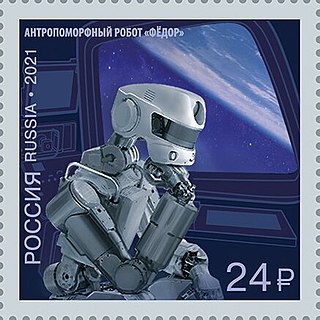 W
WFEDOR or Fyodor is a Russian humanoid robot that replicates movements of a remote operator and can perform some actions autonomously. Originally intended for rescue operations, it was sent on an experimental mission to the International Space Station in 2019. FEDOR is a Russian given male name and an acronym for "Final Experimental Demonstration Object Research".
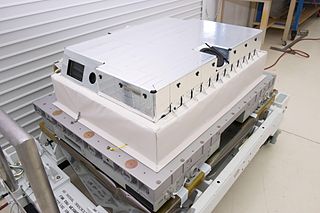 W
WHigh Definition Earth Viewing (HDEV) cameras were a payload package delivered to the International Space Station on the SpaceX CRS-3 Mission, launched on April 18, 2014. The High-Definition Earth Viewing camera suite was carried aboard the Dragon spacecraft and is configured on a platform on the exterior of the European Space Agency's Columbus laboratory module. It was the first large unpressurized NASA experiment to be assigned for delivery to the International Space Station by SpaceX. The system is composed of four commercial high definition video cameras which were built to record video of the Earth from multiple angles by having them mounted on the International Space Station. The cameras streamed live video of Earth to be viewed online and on NASA TV on the show Earth Views. Previously-recorded video now plays in a continuous loop on public streaming sites.
 W
WIceCube, also known as Earth-1, is a 3U CubeSat satellite funded by NASA deployed by the International Space Station on 16 May 2017.
 W
WThe Int-Ball, also known as the JEM Internal Ball Camera, is an experimental, autonomous, self-propelled, and maneuverable ball camera that is deployed in the Japanese Kibō module of the International Space Station. It was delivered aboard SpaceX CRS-11 on June 4, 2017. The Int-Ball is intended to perform some of the photo-video documentation workload aboard the ISS. The Int-Ball was designed by the Japan Aerospace Exploration Agency and is controlled and monitored by a team of JAXA ground controllers.
 W
WThe International Space Station programme is tied together by a complex set of legal, political and financial agreements between the fifteen nations involved in the project, governing ownership of the various components, rights to crewing and utilisation, and responsibilities for crew rotation and resupply of the International Space Station. It was conceived in 1984 by President Ronald Reagan, during the Space Station Freedom project as it was originally called and the contemporaneous Soviet/Russian Mir-2 proposal with similar aims. These agreements tie together the five space agencies and their respective International Space Station programmes and govern how they interact with each other on a daily basis to maintain station operations, from traffic control of spacecraft to and from the station, to utilisation of space and crew time. In March 2010, the International Space Station Program Managers from each of the five partner agencies were presented with Aviation Week's Laureate Award in the Space category, and the ISS programme was awarded the 2009 Collier Trophy.
 W
WThe International Standard Payload Rack (ISPR) is a steel framework container that is designed and been adopted by the International Space Station (ISS) program to support efficient integration and interchangeability of space payload hardware, such as machines and experiments. A typical rack contains 37 ISPR slots for science payloads, which are interchangeable to accommodate different components or payloads.
 W
WThe ISS Space Sky Laser is a Class IV high-power laser light projection system primarily used at the Kennedy Space Center Visitor Center (KSCVC). It was used to project an extreme 0.1 of divergence 532Nm high power 200+ Watt laser beam at the ISS for KSCVC view tracking on December, 26-31st 2014.
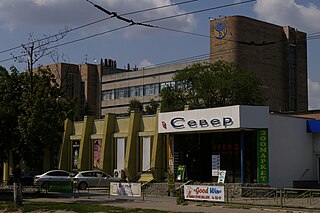 W
WJSC "Khartron" (Hartron) is one of the leading design engineering bureaus in former Soviet states, which develops and produces spacecraft and missile control systems.
 W
WKirobo is Japan's first robot astronaut, developed by University of Tokyo and Tomotaka Takahashi, to accompany Koichi Wakata, the first Japanese commander of the International Space Station. Kirobo arrived on the ISS on August 10, 2013 on JAXA's H-II Transfer Vehicle Kounotori 4, an unmanned resupply spacecraft launched August 4, 2013 from Japan's Tanegashima Space Center. A twin to Kirobo, named Mirata, was created with the same characteristics. Mirata will stay on Earth as a backup crew member. The word "kirobo" itself is a portmanteau of "kibō" (希望), which means "hope" in Japanese, and the word "robo" (ロボ), used as a generic short word for any robot.
 W
WA Sony α7S II on the International Space Station captured the first commercial 4K video footage in space in 2016.Kodak 760C Nikon D1 Nikon D2Xs Nikon D200 Nikon D3 Nikon D3X Nikon D3S Nikon D4 Nikon D800E Nikon D5 Sony α7S II
 W
WSince construction started, the International Space Station programme has had to deal with several maintenance issues, unexpected problems and failures. These incidents have affected the assembly timeline, led to periods of reduced capabilities of the station and in some cases could have forced the crew to abandon the space station for safety reasons, had these problems not been resolved.
 W
WThe project to create the International Space Station required the utilization and/or construction of new and existing manufacturing facilities around the world, mostly in the United States and Europe. The agencies overseeing the manufacturing involved NASA, Roscosmos, the European Space Agency, JAXA, and the Canadian Space Agency. Hundreds of contractors working for the five space agencies were assigned the task of fabricating the modules, trusses, experiments and other hardware elements for the station.
 W
WThe Missão Centenário was born of an agreement between the Brazilian Space Agency (AEB) and the Roscosmos on October 18, 2005. The main objective of this treaty would be to send the first Brazilian into space, Lt. Col. Aviator Marcos Pontes.
 W
WThe Nanoracks CubeSat Deployer (NRCSD) is a device to deploy CubeSats into orbit from the International Space Station (ISS).
 W
WThe X-38 was an experimental re-entry vehicle designed by NASA to research a possible emergency crew return vehicle (CRV) for the International Space Station (ISS). The 1995–2002 program also developed concepts for a crew return vehicle design that could be modified for other uses, such as a possible joint U.S. and international human spacecraft that could be launched on the French Ariane 5 booster.
 W
WNight Glider mode is one of the procedures for orienting the solar arrays on the International Space Station.
 W
WThe Orbital Piloted Assembly and Experiment Complex was a 2009–2017 Russian proposed third-generation modular space station for low Earth orbit.
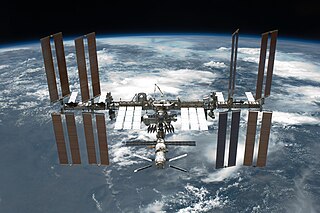 W
WOrigins of the International Space Station covers the origins of ISS. The International Space Station programme represents a combination of three national space station projects: the Russian/Soviet Mir-2, NASA's Space Station Freedom including the Japanese Kibō laboratory, and the European Columbus space stations. Canadian robotics supplement these projects.
 W
WThe Payload Operations and Integration Center, also known as the Huntsville Operations Support Center (HOSC), radio callsign Huntsville, or the Payload Operations Center, is a National Aeronautics and Space Administration (NASA) facility located at the Marshall Space Flight Center in Huntsville, Alabama. It is the headquarters for the science operations of the International Space Station (ISS), working in conjunction with the ISS control center in Houston, Texas. The Payload Operations Center links Earth-bound researchers and developers from around the world with their experiments and astronauts on board the ISS.
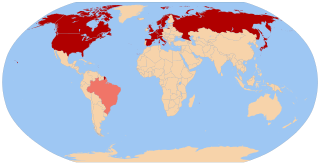 W
WPolitics of the International Space Station have been affected by superpower rivalries, international treaties and funding arrangements. The Cold War was an early factor, overtaken in recent years by United States distrust of China. The station has an international crew, with the use of their time, and that of equipment on the station, being governed by treaties between participant nations.
 W
WA robonaut is a humanoid robot, part of a development project conducted by the Dexterous Robotics Laboratory at NASA's Lyndon B. Johnson Space Center (JSC) in Houston, Texas. Robonaut differs from other current space-faring robots in that, while most current space robotic systems are designed to move large objects, Robonaut's tasks require more dexterity.
 W
WThe International Space Station is a platform for scientific research that requires one or more of the unusual conditions present in low Earth orbit. The primary fields of research include human research, space medicine, life sciences, physical sciences, astronomy and meteorology. The 2005 NASA Authorization Act designated the American segment of the International Space Station as a national laboratory with the goal of increasing the use of the ISS by other federal agencies and the private sector.
 W
WSpace Station 3D is a 2002 Canadian-American 3D short documentary film about the International Space Station written, produced, edited and directed by Toni Myers. Narrated by Tom Cruise, it is the first IMAX 3D production filmed in space.
 W
WSpace Station Freedom was a NASA project to construct a permanently crewed Earth-orbiting space station in the 1980s. Although approved by then-president Ronald Reagan and announced in the 1984 State of the Union address, Freedom was never constructed or completed as originally designed, and after several cutbacks, the project evolved into the International Space Station program.
 W
WThe Space Station Processing Facility (SSPF) is a three-story, 42,500 m2 (457,000 sq ft) industrial building located in the Kennedy Space Center industrial area, just east of the Operations and Checkout Building. It was constructed in 1992 for the manufacturing and processing of the International Space Station modules, flight hardware, equipment, structural components and solar arrays. The SSPF includes two processing bays, an airlock, operational control rooms, laboratories, logistics areas, office space, a ballroom and conference halls, and a cafeteria. The processing areas, airlock, and laboratories were designed to support non-hazardous Station and Space Shuttle payloads in 100,000 class clean work areas.
 W
WThe Spacecraft Atmosphere Monitor is a machine that is being tested on the International Space Station to check on the health of the astronauts on it. It ensures that the air quality in the spacecraft is free of gas contaminants. It is planned on being used during the Artemis program in the Orion spacecraft. It was first tested on July 29, 2019.
 W
WUnited Space Alliance (USA) was a spaceflight operations company. USA was a joint venture which was established in August 1995 as a Limited Liability Company (LLC), equally owned by Rockwell International and Lockheed Martin. The sale of Rockwell's aerospace and defense assets, including the Rockwell Space Operations Company (RSOC) and the Space Transportation System Operations Contract (STSOC) to Boeing in December 1996 made Boeing the co-owner along with Lockheed for the rest of the company's corporate existence. The company was headquartered in Houston, Texas and in 2008 employed approximately 8,800 people in Texas, Florida, Alabama, and the Washington, D.C. area. In 2014, the company was in the process of dissolving. The company was finally dissolved on 20 December 2019.
 W
WMany people have cast votes during spaceflight. Voting from space has some inherent difficulties, as delivering paper ballots to and from a space station—as one would do for a soldier stationed overseas—would be cost prohibitive. Some astronauts vote electronically, while others communicate their voting intentions to a proxy.
 W
WA zero-propellant maneuver (ZPM) is an optimal attitude trajectory used to perform spacecraft rotational control without the need to use thrusters. ZPMs are designed for spacecraft that use momentum storage actuators. Spacecraft ZPMs are used to perform large angle rotations or rate damping (detumbling) without saturating momentum actuators, and momentum dumping without thrusters.